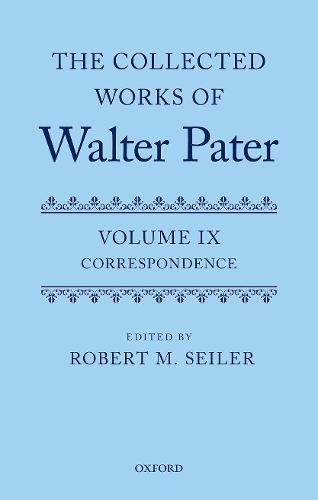Readings Newsletter
Become a Readings Member to make your shopping experience even easier.
Sign in or sign up for free!
You’re not far away from qualifying for FREE standard shipping within Australia
You’ve qualified for FREE standard shipping within Australia
The cart is loading…






Correspondence is vol. ix in the ten-volume Collected Works of Walter Pater. Among Victorian writers, Pater (1839-1894) challenged academic and religious orthodoxies, defended 'the love of art for own sake', developed a new genre of prose fiction (the 'imaginary portrait'), set new standards for intermedial and cross-disciplinary criticism, and made 'style' the watchword for creativity and life. For the first time, all the known correspondence of Walter Pater has been assembled and fully annotated, including letters exchanged with his main publisher, the Macmillans, for more than two decades. Pertinent letters written after his death by his sisters Clara and Hester Pater are also included. The Correspondence provides a richer, much more complete overview of Pater's academic, professional, and personal lives and demonstrates how vigorously he participated in some of the most important literary and cultural networks of the Victorian era.
$9.00 standard shipping within Australia
FREE standard shipping within Australia for orders over $100.00
Express & International shipping calculated at checkout
Correspondence is vol. ix in the ten-volume Collected Works of Walter Pater. Among Victorian writers, Pater (1839-1894) challenged academic and religious orthodoxies, defended 'the love of art for own sake', developed a new genre of prose fiction (the 'imaginary portrait'), set new standards for intermedial and cross-disciplinary criticism, and made 'style' the watchword for creativity and life. For the first time, all the known correspondence of Walter Pater has been assembled and fully annotated, including letters exchanged with his main publisher, the Macmillans, for more than two decades. Pertinent letters written after his death by his sisters Clara and Hester Pater are also included. The Correspondence provides a richer, much more complete overview of Pater's academic, professional, and personal lives and demonstrates how vigorously he participated in some of the most important literary and cultural networks of the Victorian era.